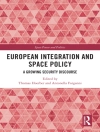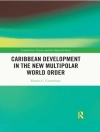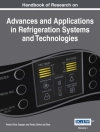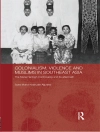‘Environmental forensics’ is a combination of analytical and environmental chemistry, which is useful in the court room context. It therefore involves field analytical studies and both data interpretation and modelling connected with the attribution of pollution events to their causes. Recent decades have seen a burgeoning of legislation designed to protect the environment and, as the costs of environmental damage and clean-up are considerable, not only are there prosecutions by regulatory agencies, but the courts are also used as a means of adjudication of civil damage claims relating to environmental causes or environmental degradation. As a result is the increasing number of prosecutions of companies who have breached regulations for environmental protection and in civil claims relating to harm caused by excessive pollutant releases to the environment. Such cases can become extremely protracted as expert witnesses provide their sometimes conflicting interpretations of environmental measurement data and their meaning. It is in this context that environmental forensics is developing as a specialism, leading to greater formalisation of investigative methods which should lead to more definitive findings and less scope for experts to disagree. Now a significant subject in its own right, at least one journal devoted to the field and a number of degree courses have sprung up. As a result of the topicality and rapid growth of the subject area, is the publication of this book – the 26th volume in the highly acclaimed Issues in Environmental Science and Technology Series. This volume contains authoritative articles by a number of the leading practitioners across the globe in the environmental forensics field and aims to cover some of the main techniques and areas to which environmental forensics are being applied. The content is comprehensive and describes a number of the key areas within environmental forensics – topics covered by the authors include: – Source identification issues – Microbial techniques – Metal contamination and methods of assigning liability – The use of isotopes to determine sources and their applications – Molecular biological methods – Hydrocarbon fingerprinting techniques – Oil chemistry and key compound identification – The emerging role of environmental forensics in groundwater pollution Additionally, the volume considers specific pollutants and long-lived pollutants of groundwater such as halocarbons which have presented particular problems and which are described in some depth, as well as the way in which chemical degradation processes can lead to compositional changes which provide valuable information. The book provides a comprehensive overview of many of the key areas of environmental forensics written by some of the leading experts in the field. It will be both of specialist use to those seeking expert insights into the field and its capabilities as well as of more general interest to those involved in both environmental analytical science and environmental law.
Tabella dei contenuti
Chapter 1: Environmental Forensics and the Importance of Source Identification;
Chapter 2: Microbial Techniques for Environmental Forensics ;
Chapter 3: Using Stable Isotopes to Determine Sources;
Chapter 4: Diagnostic Compounds for Fingerprinting Petroleum in the Environment;
Chapter 5: Perchlorate: Is Nature the Main Manufacturer;
Chapter 6: Tracking Chlorinated Solvents in the Environment;
Chapter 7: Groundwater Pollution: The Emerging Role of Environmental Forensics;
Circa l’autore
Roy Harrison OBE is Queen Elizabeth II Birmingham Centenary Professor of Environmental Health at the University of Birmingham. In 2004 he was appointed OBE for services to environmental science. Professor Harrison’s research interests lie in the field of environment and human health. His main specialism is in air pollution, from emissions through atmospheric chemical and physical transformations to exposure and effects on human health. Much of this work is designed to inform the development of policy.












